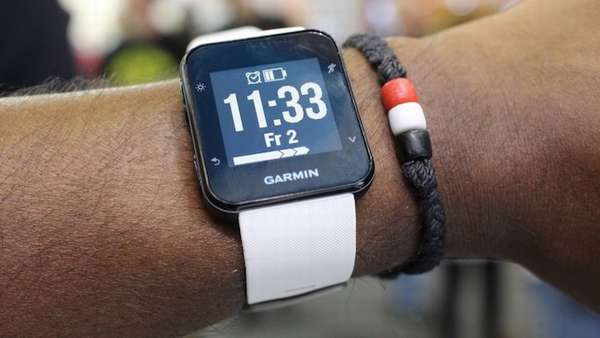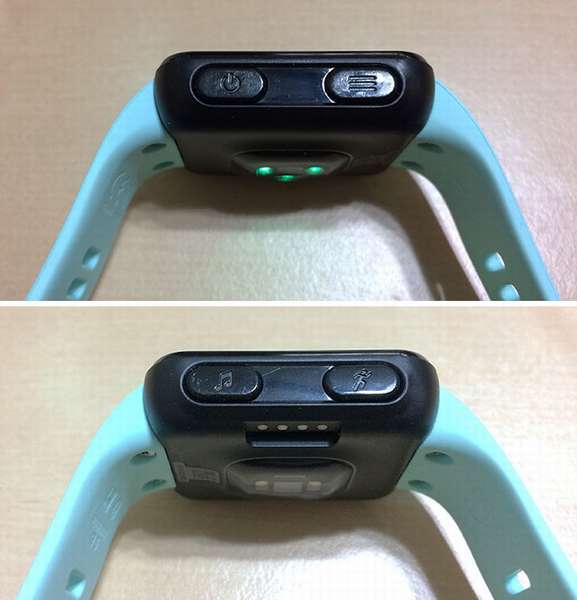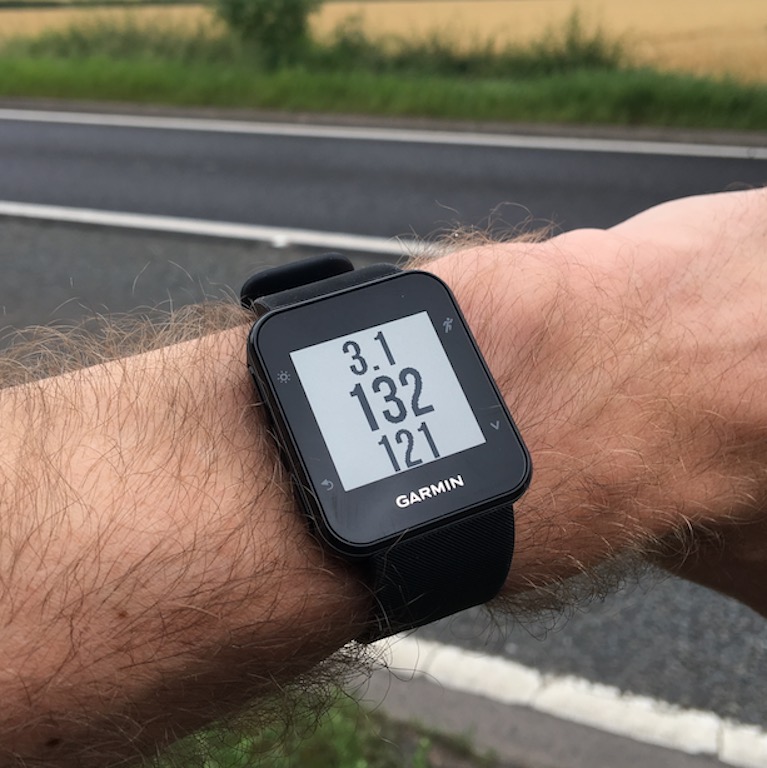Содержание:
Возможности Garmin GDR-35
В отличие от большинства регистраторов, использующих модуль GPS чисто для определения местоположения и скорости, Garmin GDR-35 реально помогает соблюдать скоростной режим, путём информирования о приближении к камерам видеофиксации нарушений. Информация о местоположении камер хранится в самом регистраторе. Информацию необходимо самостоятельно периодически обновлять, для этого с официального сайта скачивается файл, закидывается на флешку, и регистратор загружает в себя новую информацию.
В случае удара (или резкого торможения) встроенный G-сенсор автоматически защищает видео от перезаписи. Это можно сделать и вручную с помощью кнопки в любой момент времени. Часто бывает, что в кадр попадается что-то интересное, смешное, или становишься невольным свидетелем какого-то происшествия, в этом случае будет крайне обидно потерять видеозапись. Достаточно нажать одну кнопку и можно вести запись дальше, без страха, что нужное видео будет перезаписано новым.
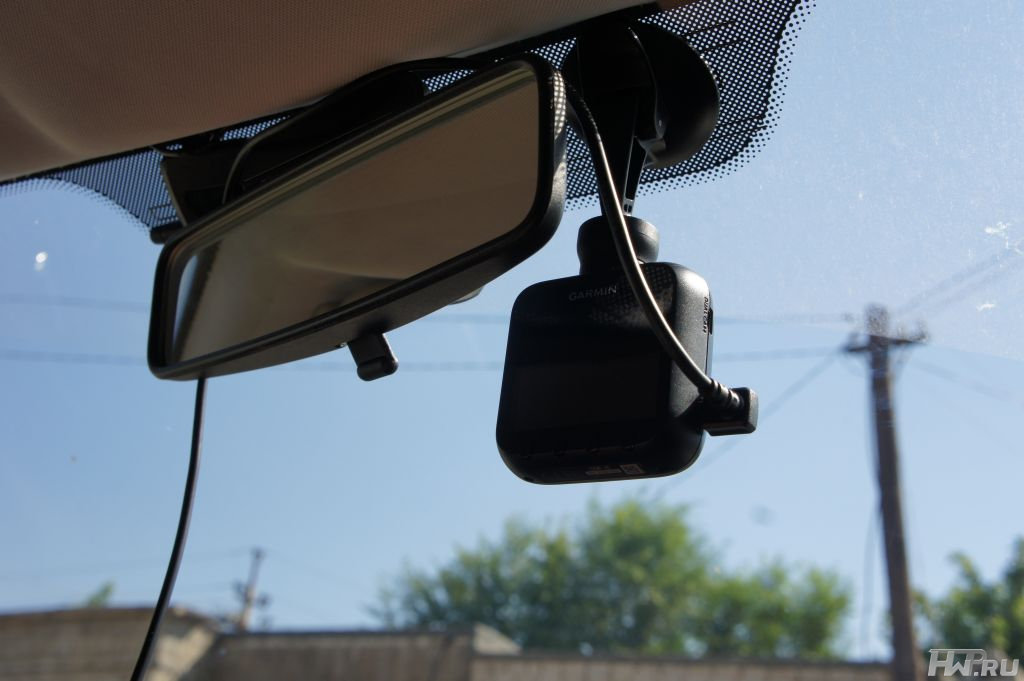
Garmin GDR-35 оснащён встроенным аккумулятором, от которого регистратор работает около часа. Это позволяет использовать регистратор вне автомобиля, или продолжать запись после отключения двигателя. В случае ДТП это позволит снять регистратор с крепления и тут же зафиксировать на видео подробности аварии (повреждения, местоположения автомобилей на дороге).
Регистратор оснащён динамиком и голосовым сопровождением. Приятный женский голос информирует пользователя о различных системных событиях (например, о начале записи). Жаль, что милая девушка не умеет поддержать беседу – было бы с кем поговорить в случае отсутствия пассажиров.
…
Вперед »
Конец
Все
Design thats a little different
- 35.5 x 40.7 x 13.3mm; 37.3g
- Available with black, lime, blue or white straps
- Third-party straps also available
Running watches aren’t always the nicest looking bits of kit. They’re often oversized and overly plastic. The Forerunner 35 falls into just one of those categories: while it’s not particularly big – it’s just 40.7mm tall and 13.3mm thick – it’s anything but a high-end looking bit of kit.
Plastic is king here (whether you like it or not). No matter which of the four different strap options you go for – traditional black and white options are joined by more adventurous light blue and lime green colour schemes – the Forerunner’s body is the same dull, black plastic offering.
Its looks are somewhat uninspired, therefore, with that plastic build and squat, boxy shape making it look like a far cheaper device than its near £170 asking price would suggest. Despite this Garmin’s looks, however, it’s well built, feeling strong and sturdy when strapped to your wrist.
Although its plastic body is great for chucking in your gym bag or for doing a bit of trail running – unlike devices such as the Misfit Phase or Apple Watch – you’re not going to want to wear it on a night out. It’s a watch that screams fitness fan, and will struggle to blend in with anything but your running kit or more casual clothing.
It’s comfortable though, and waterproof too. Capable of being submerged in up to 50-metres of water without succumbing to a watery demise, its rubberised strap and metal buckle mean it can be tailored to fit your wrist and will remain secure and comfortable while walking to work or running a half marathon. It’s comfortable enough to sleep in, too, which is handy given the watch’s integrated sleep tracking skills.
Garmin Forerunner 35 Running features
While the Forerunner 35 can track cycling (you can pair with footpad and cadence sensors) and cardio sessions, it’s geared towards running and that’s what we focused our testing on.
ADVERTISEMENT
There is of course built-in GPS, although it lacks the GLONASS support included on higher-end Forerunner watches. That might be partly why we didn’t enjoy the kind of super speedy signal pick-ups in both open and built-up running surroundings that we enjoyed on something like the Forerunner 630.
While you’re missing out on the advanced running metrics recently introduced to the Forerunner range (stride length, vertical ratio, vertical oscillation), there’s still plenty on board to keep most runners satisfied. In running mode, there are two data screens you can switch between, along with checking in on the actual time. Split into three segments you can view distance, time and pace on the first screen while the second screen displays heart rate zone, current heart rate and calories burned.
Before jumping into tracking mode, there’s an option menu where you can customise run modes to introduce virtual pacer or interval training into your session. You can also set up alerts based around hitting certain distances or heart rate zones, adjust the way data fields are displayed and swap in pace or speed metrics. Once your run is completed and you’ve saved the session, there’s a nice breakdown of your run including details on heart rate zone, cadence, steps, and average pace per laps. On a lot of running watches you’d need to go to the companion app to see such a comprehensive breakdown of a session.
GPS accuracy test: Garmin Forerunner 35 (left and centre) and TomTom Spark 3 (right)
As far as accuracy is concerned, we were happy with what the Forerunner 35 served up as far as GPS distance tracking goes, although as mentioned it did on occasion take more than a couple of minutes to lock onto a signal. The screenshots above show how it fared against the TomTom Spark 3 GPS running watch in a 10 mile race.
For indoor tracking, the Forerunner 35 relies on the built-in accelerometer to measure distance. It’s nowhere near as reliable as GPS and, much as we’ve found with other running watches that rely on this method, it can be hit and miss when it comes to accuracy.
Garmin Forerunner 35 Conclusion
The Garmin ForeRunner 35 is very much a reasonable entry into the world of running watches, at a surprisingly low price point.
Personally, I do think that the optical sensor on the back of the Polar M430 is a better unit, but then you are also paying an additional ~£50, and loosing the ability to broadcast Bluetooth music from the Garmin ForeRunner 35
If you are set on a budget ForeRunner, and have been looking at the recently announced Garmin Forerunner 30 which is listed at £129 from Garmin’s own site, you’d probably be better seeing if you can find that extra £10 to upgrade to the Garmin ForeRunner 35, as that is going to be a very good use of your £10. HOWEVER as is the case with all of these things, the longer than the Garmin ForeRunner 30 is on sale, the lower the price is going to drop. The question is, what features do you WANT, and when do you NEED them?
Yes the optical HRM is little more than a random number generator in the case of the Garmin ForeRunner 35, but the rest of the watch is a solid performer, so get’s a solid 3*
Garmin Forerunner 35 HR accuracy
Optical heart monitoring is something that Garmin has thrown into the mix recently, with the Forerunner 235 and Vivosmart HR+ among the first two devices to benefit from the company’s proprietary Elevate heart rate sensor technology.
Its uses are twofold on the Forerunner 35. The first is to relay information about your average resting heart rate and real time bpm readings. From the watch, a graph will display readings from the last four hours. This feeds into your activity tracking data to give you a more comprehensive view of your daily health.
It also forms part of the run tracking, where you can view heart rate average and the heart rate zones you’ve spent the most time in during a session. We didn’t have the most positive experience using the technology on the Forerunner 235 and the Vivosmart HR Plus and it’s a similar story with the 35 when you delve into high intensity training territory.
HR accuracy: Garmin Forerunner 35 (left) and TomTom Spark 3 (centre and right)
In our 10 mile race (above), where our pace was steady and consistent, there was a 1-2 bpm difference between average heart rate readings and maximum heart rate readings recorded in comparison to the TomTom Spark 3, a wrist-based optical heart rate sensor we’ve come to rely on for accuracy.
HR accuracy: Garmin Forerunner 35 (left) and Polar H7 (centre and right)
When we put things to the test on a treadmill with the Polar H7 chest strap and introduced some interval running, the Forerunner 35 initially records quite erratic readings before it settles down and becomes more consistent. While HR average seems consistent, there’s a great disparity with maximum HR. It’s something we’ve found with other optical heart rate monitors where so many factors can impact on delivering reliable readings.
Garmin Forerunner 35 Activity tracking
If you’ve read any of our most recent Garmin reviews then you’ll know we’re big fans of the company’s approach to activity tracking. It’s not just about what you can track, but how the tracking data is used to keep you motivated to stay active.
ADVERTISEMENT
You still get the Vivosmart and Vivofit-inspired features like the Move Bar, which builds up on the main watch screen and will flash up a message to get moving when you’ve been inactive for long periods. The bottom-right physical button lets you scroll to an additional screen where you can view step count and the adjusted target step count. You also get the same automatic sleep tracking, which serves up the kind of data that’s not too dissimilar to that found on a Fitbit.
Putting it through its paces alongside the Fitbit Flex 2 and the TomTom Spark 3, we were more than satisfied with the data. It’s the motivating features that really win it for us though.
Garmin Forerunner 35 Design
If anything screams budget on the Forerunner 35, it’s the design. Garmin has shown with our Fitness Tracker of the Year, the Vivosmart HR Plus, and its Fenix 3 collection that it is capable of making a good-looking wearable. Unfortunately, that’s not something you can really say about the 35.
It’s the ugly duckling of the Forerunner family, and undeniably a sports watch with its small, square plastic case and thick black bezel surrounding a not-so-super-sharp 128 x 128 resolution monochrome screen. There’s no touchscreen here, although it’s still a haven for fingerprint smudges. If you remember what the first generation Garmin Vivoactive looks like, that’s pretty much what you’ve got here.
Garmin does try to add a bit of colour, offering a choice of black, blue, green or white watch straps. Our blue strap was light and comfortable to wear and didn’t press too tightly against the skin as some sport bands can; it’s the kind of strap we’re accustomed to seeing on Garmin watches.
Latest running watch reviews
-
Polar M600 review
PolarвЂs first Android Wear smartwatch doesnвЂt feel like a smartwatch… and thatвЂs good -
Garmin Fenix 3 HR review
Garmin’s heavy hitter adds heart rate -
TomTom Spark 3 review
TomTomвЂs GPS watch becomes an even better running partner
Aside from our obvious distaste for the 35’s look, it is at least very easy to operate. There are four physical buttons in total surrounding the watch face. The one in the top left corner is dedicated to a backlight, which can be customised so that it’ll turn on for certain tracking modes. Holding it down will also turn the watch off to help conserve battery life. Below that is the back button, which navigates you out of menus but also leads to a screen where you can view tracking history and milestones, adjust settings and set up alarms.
The top right button is your route to the multiple tracking modes. Here you’ll find dedicated modes for cardio, walking, outdoor running, indoor running and cycling. Completing the setup is the navigation button that takes you through additional menu screens where you can check in on resting heart rate, notifications, step counts, calorie burn, active minutes, last workout data and the weather. This button also doubles as a means to control music playback, a first for Garmin watches. That means you can skip tracks and play/pause music without reaching for your phone.
Around the back is where you’ll find Garmin’s proprietary Elevate optical heart rate sensor, delivering continuous readings throughout the day and night as well as during training sessions. It’s also been slapped with a 5ATM certified waterproofing rating, which means you can take it for a dip in the pool up to 50 metres. It just won’t track swimming sessions like the Fenix 3 or the Vivoactive HR.
Начало работы и подключение
Forerunner 35 не зависят от синхронизации со смартфоном или ПК. Прибор функционирует самостоятельно. Чтобы начать работу, включите устройство (нажмите на кнопку питания). Часы запросят индивидуальные параметры, введите их (рост, вес, пол и пр.). В соответствии с ними гаджет высчитывает тренировочную норму.
Программа рассчитана на все модели часов Гармин. Скачайте ее на смартфон, чтобы упростить управление и дополнить базовый функционал устройства.
Как подключить часы к смартфону:
- Скачайте приложение на телефон и дождитесь установки,
- Откройте программу и зарегистрируйтесь (создание учетной записи),
- Активируйте модуль Bluetooth и совершите синхронизацию двух устройств.
Технические характеристики
|
Garmin Forerunner 35 |
|
| КОМПЛЕКТАЦИЯ | |
| Кабель для зарядки / руководство по эксплуатации / гарантийный талон | |
| ОБЩАЯ ИНФОРМАЦИЯ | |
| Масса | 37.3 граммов |
| Габариты | 40.7 × 35.5 × 13.3 мм |
| Форма корпуса | Закругленный квадрат |
| Материал ремешка | Гипоаллергенный силикон |
| Покрытие ремешка | Точечное |
| Тип ремешка | Съемный / регулируемый |
| Цвета исполнения | Черный / зеленый / голубой / белый |
| ИНФОРМАЦИЯ О ЗАЩИТЕ | |
| Защита от пыли | Присутствует |
| Защита от воды | Присутствует (до 50 м / 5 АТМ) |
| ИЗОБРАЖЕНИЕ И ЭКРАН | |
| Наличие сенсора | Отсутствует |
| Тип дисплея | Монохромный / настраиваемый |
| Размер дисплея | 235 × 235 мм |
| Разрешение дисплея | 128 × 128 мм |
| АККУМУЛЯТОР И АВТОНОМНАЯ РАБОТА | |
| Тип аккумулятора | Литий-ионный |
| Время работы в режиме ожидания | 9 дней |
| Время работы в режиме тренировки | 13 часов |
| УПРАВЛЕНИЕ И СИНХРОНИЗАЦИЯ | |
| 4 кнопки на корпусе / прокрутка / приложение на смартфоне | |
| Совместимые устройства | Смартфон / ПК |
| Автоматическая синхронизация с ПК | Поддерживается |
| Приложение для смартфона | Garmin Connect |
| Модуль для синхронизации | Bluetooth |
| ДАТЧИКИ | |
| Пульсометр / счетчик калорий / шагомер | |
| ФУНКЦИОНАЛ | |
| Модуль GPS | Присутствует (встроенный) |
| Запоминание тренировок | Поддерживает (7 занятий) |
| Функция анти-потери телефона | Присутствует |
| Звуковые оповещения | Виброотклик |
| «Виртуальный партнер» | Поддерживается |
| «Автоматическая пауза» | Поддерживается |
| Темп и время тренировки / расстояние | Предупреждает |
| Измерение пульса | Присутствует |
| Мониторинг сердечного ритма | Присутствует |
| Подсчет калорий | Присутствует |
Дизайн и материалы
Присутствует явное сходство с дизайном знаменитых часов Apple. Особенно это заметно в белом цветовом варианте модели. Корпус выполнен в форме закругленного квадрата, к нему прикреплен ремешок из гипоаллергенного силикона. С внешней стороны поверхность покрыта точечным узором.
Преимущества силиконового ремешка:
- Не впитывает влагу
- Не поглощает запахи
- Не скользит на руке
- Не натирает запястье
- Принимает индивидуальную форму
Часы Garmin модели Forerunner 35 оснащены регулируемым ремешком – т.е. часы подойдут на маленькую и на большую руку. Еще один плюс – возможность замены. Ремешок фиксируется болтиками и легко заменяется в случае разрыва.
Водонепроницаемость корпуса рассчитана на 50 АТМ, но устройство не подходит для занятий плаванием. Разработчики не оснастили Forerunner 35 режимом для пловцов, поэтому часы используются в велоспорте, на беговых тренировках и пр.
Конструкция и датчики
На квадратном корпусе размещены 4 кнопки для управления – две с левой и две с правой грани. Большое преимущество – наличие оптического датчика. Находится он с тыльной стороны часов. Прибор плотно прилегает к запястью, что обеспечивает точность подсчета. Достоверные показатели сердечного ритма и пульса важны для спортсменов. В работе GPS гаджет также не подводит.
Внутри корпуса находится акселерометр, отслеживающий движение и активность пользователя. Работа всех этих датчиков – основа для функционирования счетчика калорий. Анализируя данные пульсометра и акселерометра, прибор вычисляет количество потраченных калорий за сутки.
Screen aimed at running first
- 1.3-inch square screen
- No colour panel option
- 128 x 128 pixel resolution
Sadly, the watch’s screen does nothing to boost its design credentials. Unlike many of the high-end running watches out there, Garmin’s not squeezed a touchscreen in here. Actually, there’s not even a colour display. Instead, there’s a 1.3-inch monochrome panel with a basic 128 x 128 pixel resolution. It’s basic and bland.
No, it’s not going to win any beauty contests, or really fit with many of your outfits, but it’s a screen that’s detailed enough to get the job done. It’s also easy to view when running – which is what’s important.
Instead of a touchscreen, the watch features four physical buttons. Again, these aren’t particularly pretty, but they work well. The top left control triggers the watch’s backlight while the bottom left button will take you back through the menus. On the right side, the upper button lets you make selections while the bottom control scrolls down through menus and options.
The Forerunner 35’s screen might not be the most visually impressive, but when out running its monochrome panel makes it a simplistic joy to view and read. Whether your taking your 10k at a steady pace through the woods or upping the tempo while pounding the pavement, the Forerunner’s screen and software offer plenty of glanceable data.
During a run, when your arms are bouncing around, these slightly raised buttons also make scrolling through data screens a breeze.
Design
While many of Garmin’s GPS watches are circular, the Forerunner 35 looks more like an Apple Watch, for better or worse. Its flat-faced, squarish design sets it apart from the rest of Garmin’s lineup, which either look sporty (the Forerunner 235) or more like a traditional watch (the vivomove). It’s a safe, middle ground between the two that I felt looked bland, but wouldn’t look out of place in a variety of situations.
(Image credit: Jeremy Lips / Tom’s Guide)
On the right of the watch are two buttons: one for starting and selecting a workout, and one for moving through menu items. The left side has a button for turning on the backlight, and a Back button.
I found the Forerunner’s 35’s 0.93-inch, 128 x 128-pixel display easy to read in any condition. It’s a lot brighter and crisper than the $149 Polar M200, a GPS watch that also has a heart rate monitor and smartphone notifications. It even seemed a bit brighter than the TomTom Spark 3, though the two were pretty evenly matched.
(Image credit: Jeremy Lips / Tom’s Guide)
Navigating through menus with only a down-arrow button proved more time-consuming than I’d like. Too often, I would press the Start Workout button, thinking it would move me back up a list, only to select an item by mistake. Also, scrolling through long menus was tedious, especially when I scrolled past the item I wanted, and had to scroll all the way through the list again.
Like the TomTom Spark 3, the Forerunner 35 is water-resistant to 5 ATM (130 feet) ― it’ll survive some splashes and swimming, but don’t take it scuba diving. You can get the Forerunner 35 with a black, light blue, lime green or white band. The bands are replaceable, but you’ll need a screwdriver.
MORE: Best Fitness Trackers for Running, Swimming and Training
Running with Garmin Forerunner 35
For some reason, When it comes to using the Garmin ForeRunner 35, it feels as though Garmin raided their parts bin and threw in an aged GPS chipset, as it does sometimes take the full minute to find and lock onto the satellites.
You can choose a series of training alerts of out on the run, regarding, time, distance, calories, HR. You can also choose the data fields layouts
It is the data fields, where one of the biggest weaknesses of the Garmin ForeRunner 35 becomes apparent. There are three fields you can select on each of the two data screens.
When you actually start a run, the unit gives you a brief flash of what is being displayed, but then you are left with blank numbers
If might seem a little daft, but when you just quickly glance down at the watch, it puzzling to remember which string of figures is which… leading to the thoughts “Did I set distance or HR zones as the top figure?”
Now in fairness, that is probably a reflection of the fact I’m using several units most of the time, but still, would a small indication have killed Garmin?
When you press the top RIGHT button, it pauses any workout, giving a scrolling breakdown of your totals on the pause screen
When you do hit save, you then get alerts about any new records you have set etc
Then the obligatory post activity summary
Garmin Forerunner 35 Optical Heart Rate
Garmin was one of the companies to really bring optical HRM tech to the masses and then bringing the technology in-house, by building their own Elevate Sensor. Now with the usual caveats about optical heart rate sensors, they are still far from the levels of accuracy we see on classical chest straps, I’m just not that impressed with the second generation Elevate sensor:

On the Fenix 3, the Garmin sensor tracked reasonably, but the new Elevate seems to have the same issue on the ForeRunner 35 as I saw on the Fenix 5. If we compare it to something like the Polar M430, or A370, the signal is simply more noise filled, and just less responsive.
In the above graph, it takes about 5-6mins before I have warmed up, and the watches have detected my capillary pulse. But even after that the ForeRunner 35 just doesn’t keep pace. The two spring sections at 15 and 20 mins are a good example of that.
A quick spin on the bike shows a very similar picture, with the Forerunner 35 having an odd spike in the middle. However, it should be noted that bike rides are always harder from optical HRM’s due to vibrations. The Polar M430 also falls off the tracking after the 10-minute marker
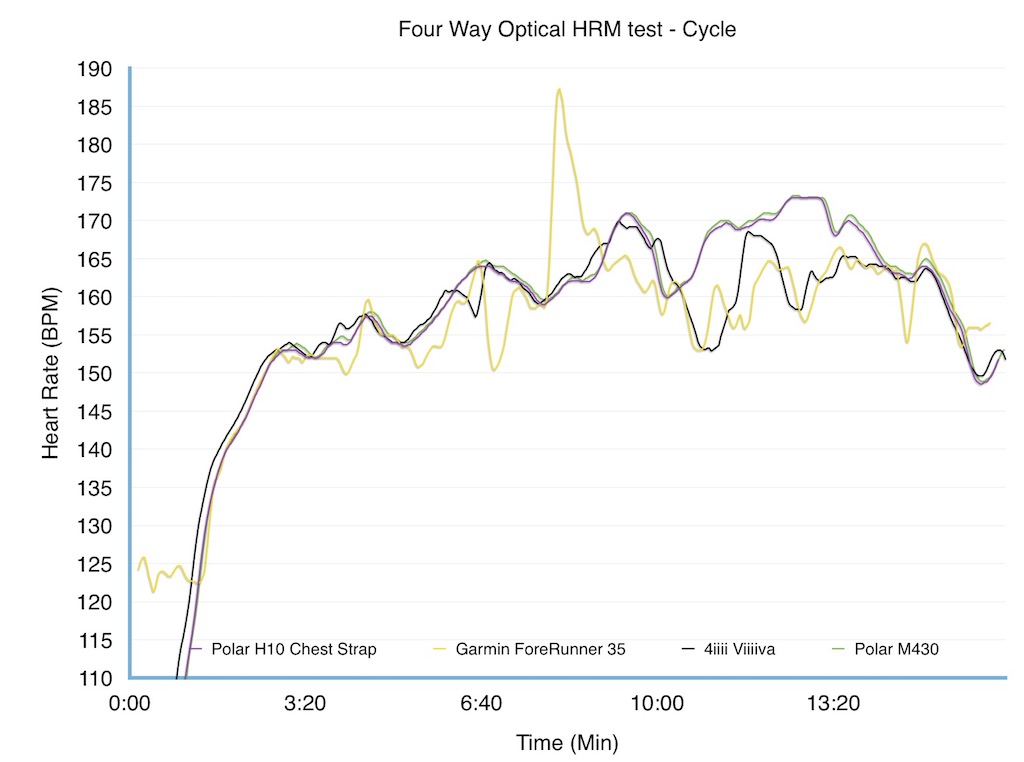
The Garmin ForeRunner 35 is also able to rebroadcast the optical HR data to another device… if you considered it accurate enough to actually do anything with
Garmin ForeRunner 35 Activity Monitor
As mentioned in the specs, there are three facets to the activity monitor on the Garmin ForeRunner 35 – 24×7 HRM
Step monitor, using Garmin’s “nudge” approach to goals, which changes every day depending your previous day
Finally sleep tracking, which can only really be viewed from the Garmin Connect app
Garmin Forerunner 35 On the Bike
Realistically the bit that allows the Forerunner 35 to have a cycle mode is that you connect cycling sensors to the unit. Although only speed and cadence sensors can be paired with the unit. If you want to pair a power meter, you are going to have to go further up the Garmin price range.
The slow GPS in the Garmin ForeRunner 35 becomes a little bit more pressing when it comes to getting on the bike, as the minute of sitting there, is just somehow more frustrating. At least on a run, while waiting for the GPS lock, you can start walking without too much of an issue. Whereas trying that on the bike, the delay increased to nearly 10 minutes before the lock was acquired. So make sure you start the unit looking for satellites ASAP!
The sometimes slow nature of the Garmin Forerunner 35 to detect HR or GPS satellite can be more of an issue when it comes to going out on the bike, as I have found you can frequently have been riding 5-10 mins before the GPS lock finally clicks in. If the unit hasn’t got a lock, you a much better staying put!
Garmin Forerunner 35 Device Design
The Garmin Forerunner 35 is available with four different coloured straps. I actually think for this until that the contrasting straps look better than the all-black unit I have been testing

The unit proportions of the unit, make the ForeRunner 35 look smaller than it is in reality, something that is aided further by the very slim rubber band. Although it is still noticeably smaller than the Polar M200 competitor
So with that in mind, let’s take a look around the Garmin ForeRunner 35. Garmin has shown here that you don’t need a fancy full-colour display to make a good watch screen. I’m actually coming to the opinion that when it comes to watch screens, if you must have a colour display, then use OLED. Otherwise, you are better off with monochrome as we see here
There are four buttons on the sides of the Garmin ForeRunner 35. On the left aspect of the unit is the Power/Light button, and the Menu/Back button
On the opposite side is the Select/Go button, and then the Down/Music button
On the back of the unit is Garmin’s Elevate sensor, which uses three LED’s, two green and one yellow to increase accuracy. In the Garmin Fenix 3 HRM review, we saw that the accuracy had increased with the second gen unit, however with this third-gen sensor, that shipped initially on the Fenix 5… the accuracy was seen to be less on the Fenix 5,! So it will be interesting to see if Garmin have tweaked things here for the Garmin ForeRunner 35
Finally, there are four contact patches which are used for Garmin’s charge cable
The unit is rated as up to 9 days in watch mode, and I certainly found that to be very accurate. I usually keep whichever chargers I need with me, but merely the fact that I was easily able to get over a weeks use out of the Garmin Forerunner 35 even with a few light activities certainly was a big positive.
Описание и особенности
Смарт-часы Forerunner 35 от компании Garmin имеют две особенности, выделяющие их в семействе умных часов спортивного предназначения.
Они имеют датчик GPS, могут отслеживать сердечный ритм оптическим датчиком HR Elevate Garmin, что позволяет контролировать состояние организма во время спортивных занятий. Кроме того, устройство имеет ряд дополнительных функций.
Garmin Forerunner 35 black имеют прямоугольную форму со скругленными краями.
По размерам и внешнему виду часы похожи на популярный гаджет Apple Watch.
Прибор легкий и на запястье практически не чувствуется.
В качестве дисплея используется монохромный жидкокристаллический монитор. По умолчанию, кроме даты и времени, на экране отображается состояние аккумулятора и соединения Bluetooth.
Ниже даты можно увидеть информацию о передвижениях в течение дня — куда и сколько владелец ездил, ходил или бегал.
С тыльной стороны FR 35 располагается оптический датчик частоты сердечных сокращений, информирующий владельца о количестве затраченных калорий на тренировке.
Есть акселерометр, способный подсчитывать количество пройденных шагов. Он также способен автоматически определять, что делает человек — идет, бежит или едет на велосипеде.

Встроенный модуль GPS предоставляет информацию о маршруте передвижения, в том числе расстояние и скорость, с которой человек перемещается.
Таким образом, владелец получает полную информацию об эффективности кардиотренировок, занятий ходьбой, бега в помещении или на улице, езды на велосипеде.
Сердечный ритм отслеживается круглосуточно. Спортсмен может задать маршрут передвижения, скорость и допустимую частоту пульса.
Если какой-либо из параметров отклоняется от заданного, гаджет оповещает об этом владельца вибрацией.
FR 35 совместимы с дополнительными датчиками сердечного ритма, а также с устройствами, способными определять скорость и частоту вращения велосипедных педалей.
Таким образом, можно запрограммировать любую тренировку — будь то езда на велосипеде, бег или спортивная ходьба. Часы синхронизируются со смартфонами. Это дает возможность получать информацию о входящих сообщениях, звонках и письмах, полученных на почтовый ящик.
Устройство управляется 4 кнопками, расположенными попарно по обеим сторонам корпуса. Верхняя левая кнопка подсвечивает экран, включает и выключает питание. Нижняя слева вызывает меню, если использовать длительное нажатие.
Короткое нажатие на кнопку вызывает функцию «Назад».
Триггер, расположенный вверху справа, позволяет выбрать нужный пункт меню, включает и выключает активность отслеживающих функций FR 35.
Правая нижняя кнопка листает меню и прокручивает экран, позволяя при этом читать уведомления и различные тексты. Ее длительное нажатие позволяет получить доступ к управлению музыкальным плеером смартфона, если он подключен к часам.
Время на часах отображается нажатием верхнего левого триггера. Можно выбрать как цифровой, так и аналоговый циферблат. Доступ к настройкам можно получить, вызвав меню длительным нажатием нижней левой кнопки.
Там же заносится информация о владельце — рост, вес, возраст и максимальное значение сердечного ритма.
Но лучше и удобнее Forerunner 35 настраиваются на смартфоне.
Для этого разработано приложение Garmin Connect, совместимое с операционными системами iOS и Android.
Пробежка с FR 35 начинается с того, что нужно нажать правый верхний триггер, прокрутить меню до пункта «Пробежка на улице» и активировать его этой же кнопкой.
После этого запускается GPS-навигатор, определяющий местоположение по спутникам. Для этого понадобится всего 10-15 секунд.
Как только местоположение зафиксировано, можно бежать, нажав еще раз правый верхний триггер. Часы начнут отслеживать расстояние, время, пульс и темп пробежки, выводя всю информацию на экран.
Акселерометр обновляет информацию каждый километр бега, подытоживая общую информацию о пробежке. После завершения тренировки следует опять нажать правую верхнюю кнопку. Все полученные данные при этом сохраняются.
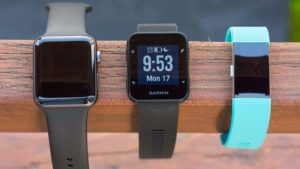
У часов есть еще одна функция — с их помощью можно найти в помещении потерявшийся смартфон.
Длительным нажатием триггера прокрутки вниз активируется вибрация смартфона.
В комплект Garmin Forerunner 35 входит кабель USB для зарядки, а также руководство (инструкция) по эксплуатации.
Обзор функциональных возможностей интеллектуальных часов Forerunner 35 от компании Garmin позволяет утверждать, что они в полной мере отвечают потребностям спортсменов, занимающихся бегом, велоспортом и спортивной ходьбой.
Внешний вид Garmin GDR-35
У всех устройств Garmin есть общий фирменный стиль. И видеорегистратор Garmin GDR-35 отлично вписывается в общую компанию.

Монолитный корпус выполнен из очень качественного чёрного пластика. Передняя часть – глянцевая, задняя – матовая. Корпус плотно сбит, детали хорошо подогнаны. Габариты не очень большие, я бы даже сказал максимально компактные с учётом размера дисплея – 8,2х6,6х4,2 см.

Объектив имеет внушительные размеры и хорошую светосилу (F=2.0). Угол обзора – 110 градусов по диагонали. Видеорегистратор оснащён CMOS сенсором размером 1/3 дюйма.

Почти всю заднюю часть занял 2,4 дюймовый дисплей. Что любопытно, производитель не указывает информацию о разрешении экрана, но скорее всего оно типично для дисплеев такой диагонали (около 320х240 пикселей).
Под дисплеем находятся четыре кнопки. Они лишены гравировки, так как их функции могут меняться в зависимости от режима работы устройства. Так, в режиме видеосъёмки на кнопки вынесены самые нужные функции: моментальное фото, защита текущей видеозаписи от перезаписи, просмотр отснятого материала, а также вход в меню настроек. При входе в меню настроек кнопки выполняют функцию “вверх”, “вниз”, “ОК” и “Возврат” для перемещения по меню. Также между кнопками присутствует индикатор работы – двухцветный светодиод (горит красным при записи и зелёным при входе в меню).
Кнопка включения находится на левом торце. Тут же – слот для карточек microSDHC. Что приятно, Garmin GDR-35 комплектуется карточкой ёмкостью 8Гб 10 класс (производство не абы чьё, а SanDisk – весьма надёжного бренда), которой хватит на несколько часов видео. Многим такого объёма будет достаточно, поэтому в покупке дополнительной карточки нет нужды. Приятно, что устройство можно использовать сразу же после покупки, без приобретения обязательных дополнительных компонентов.

На правом боку находятся два разъёма. Нижний – обычный miniUSB для зарядки и подключения к ПК. Верхний – хитрый фирменный разъём (хоть и похож на miniUSB, но не совместим с ним) для подключения дополнительной камеры GBC-30. Вторую камеру можно установить на заднее стекло, или на лобовое и направить в салон.
Крепление на лобовое стекло компактное и в то же время за счёт шарнира позволяет абсолютно точно скорректировать направление съёмки. Никаких лишних болтов, лишних элементов, при этом крепление не боится тряски по нашим “идеально ровным” дорогам. Ну почему таким удобнейшим креплением не оснащаются все регистраторы на рынке?










